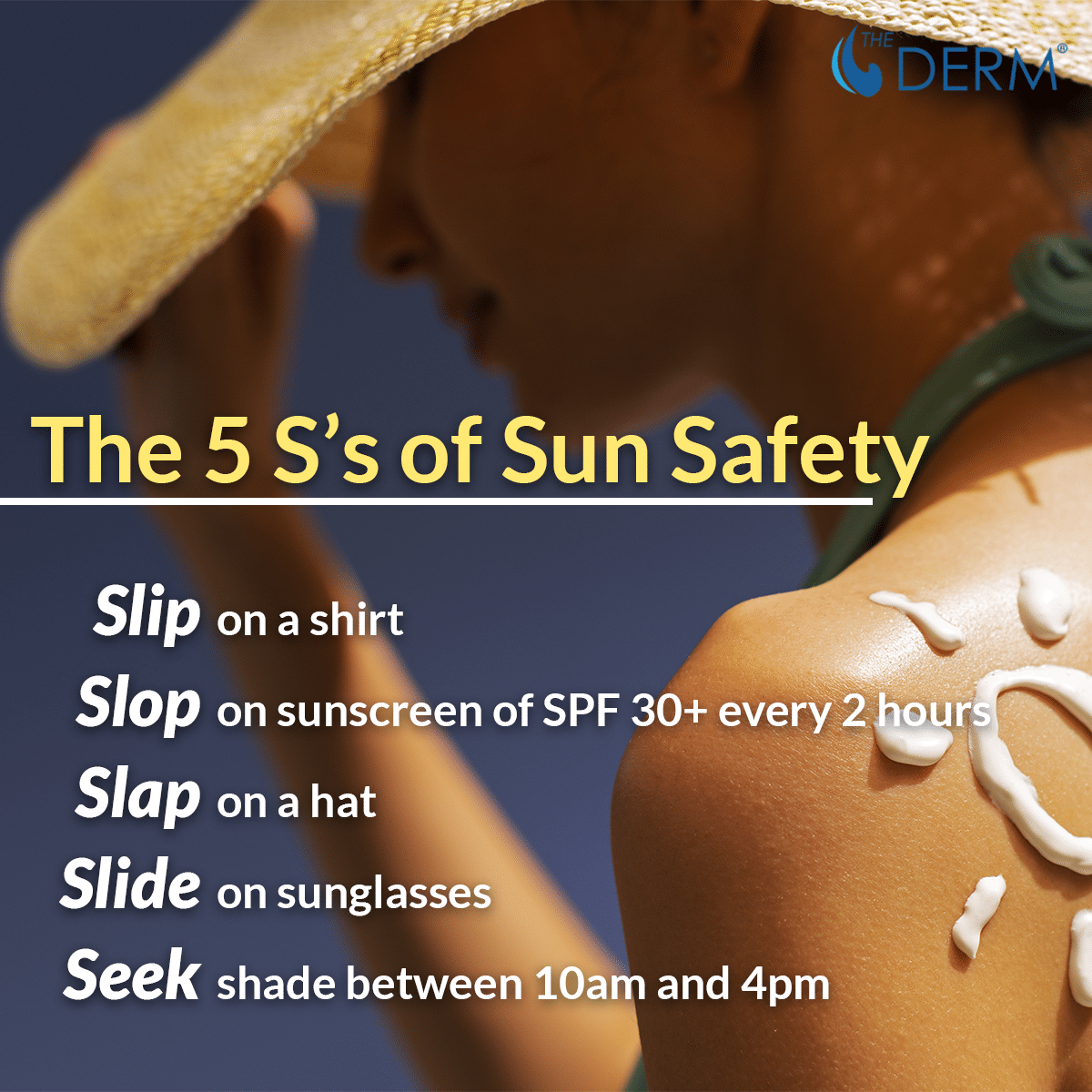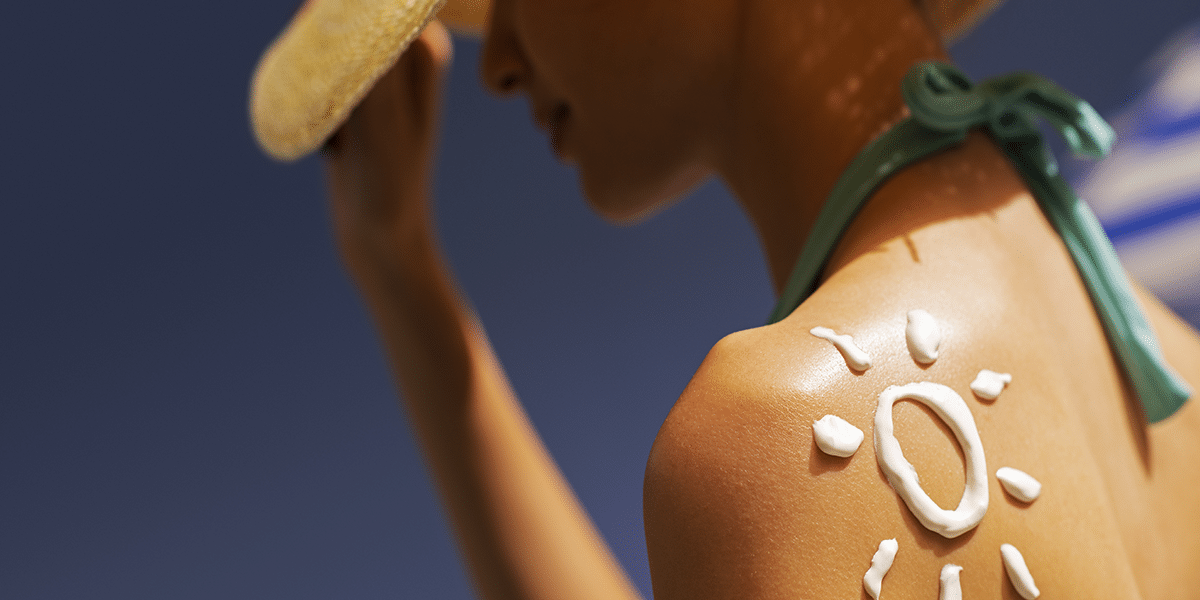It’s that time of year again—a time when you hear over and over all about being safe in the sun, to wear sunscreen and protect your skin…advice that typically goes in one ear and out the other. Until now, that is.
Because we care about you and more specifically, your future.
It’s easy to think sun protection isn’t a huge deal when we’re young. We tan easily, with burns subsiding quickly, and therefore equate that with being “safe” in the sun. But the reality is…
Sun damage occurs at every age, and will add up over the years.
During this month of Skin Cancer Awareness, we want to address some of the common dos and don’ts of sun safety, but also provide some information that you might not know may be impacting your skin’s health—some stuff you can’t even see.
The Dos of Sun Safety
If you’re practicing safety in the sun, these are the things you prioritize that will help you maintain healthy, safe skin well into your adulthood.
1. Wear Sunscreen
This may seem obvious, but we’re always surprised how many of our patients admit to never wearing sunscreen at all, much less on the areas regularly exposed to the sun.
“The American Academy of Dermatology and myself recommend at least an SPF of 30 or higher. I always recommend a mineral-based sunscreen that has zinc and titanium oxide, and the higher the percentage, the better the sunscreen.”
On a daily basis (even in the winter!) you should wear sunscreen in these places:
- Your face (preferably higher than SPF 30)
- Your shoulders
- The tops of your ears
- Any other areas that are regularly exposed to the sun
We have a brand new product line, Dermamde, now at The Derm which includes clinical grade sunscreen at a low price!
Another tip: don’t forget chapstick with SPF in it! Your lips can also burn.
2. Spend Time in the Shade
Oftentimes, we can find shade to stand or sit in instead of being in direct sunlight. While sunscreen is reliable, this can help further protect your skin by avoiding UV light in the first place.
Here at The Derm, we donate shade structures locally to ensure there are options for locals to use during events and when spending time outdoors. Our newest one will go up in Deerfield Park District’s Jewett Park Preschool Playground next month!
3. Wear Sun Protective Clothing
Not all clothing options are created equally. Some clothes may seem like they’re keeping you protected by covering your skin, but in reality, some lighter fabrics can still allow UV ray penetration that can lead to skin damage.
Typically, we recommend our patients wear hats when they can, along with dark clothing that is breathable, but fully covers the skin. Fabrics that are darker tend to absorb UV rays instead of allowing them to reach your skin.
Avoid light or sheer fabrics, or wear sunscreen beneath them in order to help further protect your skin.

The Don’ts of Sun Safety
If you want to protect your skin, these are some activities to avoid, as they commonly contribute to more damage, and potentially, skin cancer.
1. Don’t – Forget to Reapply Sunscreen
Always check the labels of your sunscreen for directions on how often you have to reapply, and whether or not it’s waterproof.
Oftentimes, your sunscreen may lose its effectiveness throughout the day, which means your skin is once again exposed to the sun when you think it’s being protected. Remember that being in water or even sweating can reduce the effectiveness of your sunscreen throughout the day.
2. Don’t – Lay Out in the Sun to “Tan”
We’ve all heard horror stories of people who spend time tanning, only to have a battle with skin cancer later in their life. One of the most harmful things you can do to your skin is intentionally lay out in the sun, unprotected, for the sake of donning a tan.
We recommend high quality sunless tanners in order to get and maintain a “sunkissed” glow.
While spray tans have historically been used as a comedic relief in many movies, technology has since advanced where most self-tanners no longer produce the dreaded orange hue we fear. Instead, they’re reliable in producing healthy colored tans.
3. Don’t – Assume Your Skin is Protected Because of Its Color
While we know skin cancer plagues fair-colored skin in larger quantities than darker skin, don’t assume that dark skin doesn’t get skin cancer.
In fact, because those with darker skin make this mistake, the skin cancer is often not detected until later in its formation. This makes it more dangerous and much harder to treat than if it was caught earlier.
All skin colors can receive damage from UV rays, which means everyone, no matter your skin color, should practice sun safety.
While we all love the sun and spending time in it can do wonders for our overall health, when we avoid safe sun practices, we can risk skin cancer and other damage to our skin. If you’re worried about your own skin and want a skin health check, book an appointment with us here!







